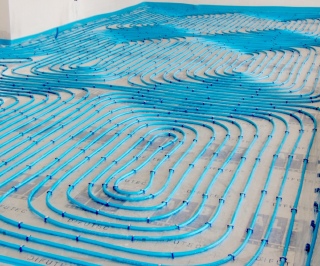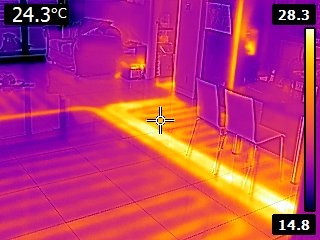A high-heat-dissipation approach to underfloor heating
The energy-saving benefits of underfloor heating can often compromise response times and the consistency of heat distribution. Ryan Grant of SAV Systems explains how these issues can be resolved with high-heat-dissipation systems
A frequent complaint from building operators with regard to underfloor heating is that the systems are slow to respond and that temperature distribution across the floor surface is uneven. However, this doesn’t need to be the case, and these issues can be addressed by using a high-heat-dissipation system rather than the traditional low-heat-dissipation design.
In a low-heat-dissipation system the heat from the water in the pipe dissipates at a relatively slow rate, resulting in an extended ‘thermal lag’ between the system heating the floor and the heated floor warming the space above it. Frustrated building operators often respond by increasing the set-point temperature, but this simply results in overheating.
 |
| Underfloor heating with high heat dissipation can deliver as much heat as a conventional system, but with 6 K lower flow temperature. |
This is because once the set point has been reached, the room sensor closes the heating circuits but the heated floor continues to heat the space for some time.
Another issue with low-heat-dissipation systems is that they operate with relatively high-temperature water circulating slowly through the embedded pipework. This means that a high proportion of the heat energy is transferred to areas of floor closest to the beginning of the underfloor heating circuit. By the time the water reaches areas further from the manifold it is considerably cooler and transfers less heat.
In fact, with a low-heat-dissipation system, less of the floor mass surrounding the underfloor heating pipes around the entire circuit is thermally activated, resulting in regions of hot and cold. Pipe-layout design can help to mitigate this problem, with the bifilar or counter-flow spiral configuration being the most effective, but does not completely resolve the issue.
Further mitigation can be achieved by designing for high heat dissipation, the benefits of which are being increasingly recognised. This approach uses lower water temperatures with higher flow rates so that the temperature differential between the start and end of the circuit is minimised, resulting in a floor surface that radiates thermal energy evenly.
This more-even temperature distribution can also be important in extending the service life of the flooring. Some hardwood and vinyl floors require no more than a 1 K temperature difference across the whole floor.
Another major benefit of high heat dissipation is that it results in lower return-water temperatures, typically around 6 K cooler than low-heat-dissipation systems.
This increases the efficiency of heat sources that deliver their highest efficiencies with low return-water temperatures. These include combined heat and power (CHP), condensing boilers and heat pumps. Consequently high flow rates can only be justified in an energy-efficient system if the heat dissipation is sufficient to achieve low return temperatures.
Higher flow rates in a high-heat dissipation system clearly produce a slight increase in pump energy consumption, but this is more than compensated for by increased efficiency elsewhere.
 |
| Uneven heat dissipation from underfloor heating gives poor comfort conditions and is wasteful of energy. |
Control systems can learn the thermal characteristics of each room and vary the start of the warm-up process to compensate for systems that react slowly. However, it is more efficient to have a system that responds more quickly.
Achieving high heat dissipation involves the use of aluminium multi-layer pipe fixed directly to aluminium panels. Experience shows that 17 mm-diameter multi-layer pipe is more effective than standard 15 mm-diameter pipe as it produces lower pressure losses and enables faster flow rates through longer pipe runs.
Using an aluminium layer in the pipe ensures high thermal conductivity which, in turn, provides a high heat-transfer coefficient for efficient heating of the floor screed. The ductile nature of the aluminium also facilitates installation.
The floor screed used influences the performance of the system. The most common type of screed is made of dry sand and cement in thicknesses from 70 to 100 mm. This is relatively cheap and easy to install but has a low thermal conductivity and high thermal mass, thereby increasing the thermal lag of the system. This type of screed is best where a constant temperature is to be maintained and response times are not a major consideration.
An alternative is liquid self-levelling (anhydrite or cementitious) screed that can be applied in thicknesses as small as 20 mm above the pipe and has a much higher thermal conductivity than dry sand and cement. This supports high heat dissipation, allowing faster response times — even approaching those of a conventional radiator system. It also reduces the risk of temperature overshooting or undershooting, making it ideal for residential applications.
In addressing the concerns of building operators in relation to underfloor heating, which in some circumstances may deter its use, building-services engineers are able to provide clients with a highly efficient system that does not compromise on comfort. High-heat dissipation is clearly the way to achieve this.
Ryan Grant is product manager for underfloor heating at SAV Systems.








